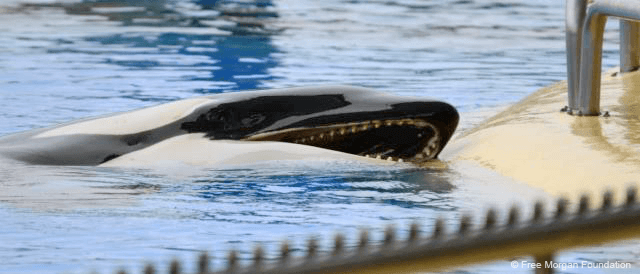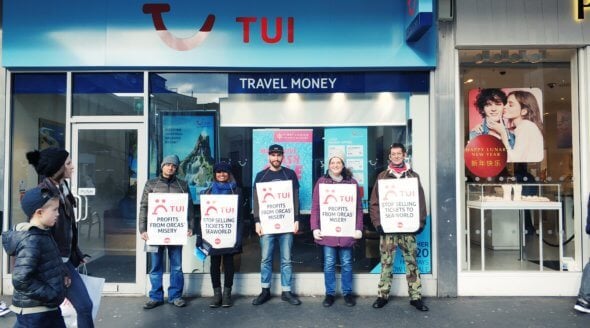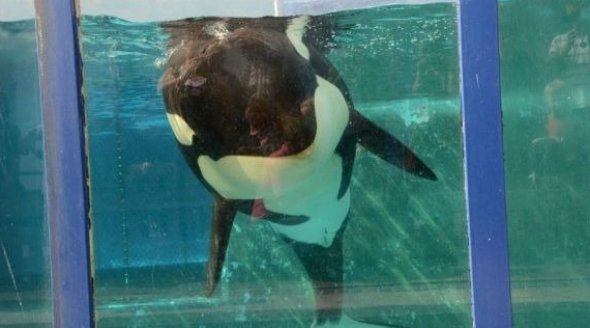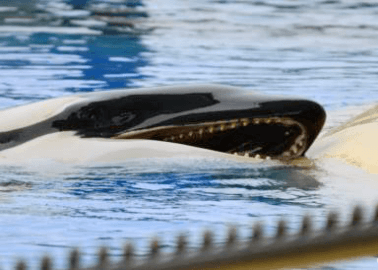RIP: Young Orca Named Skyla Dies at Loro Parque
Skyla – a 17-year-old orca – has died at Loro Parque marine park in Tenerife, Spain.
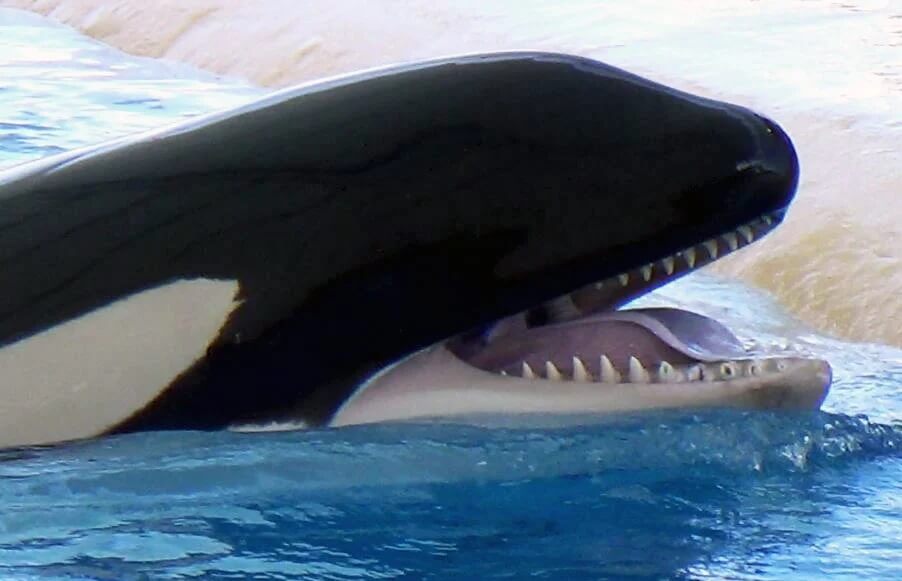
Skyla’s father was Tilikum, the orca whose suffering was exposed to millions in the documentary Blackfish after the frustration of confinement and lack of autonomy led him to kill three people, including trainer Dawn Brancheau – for which SeaWorld appeared to put him through a year of solitary confinement. He was only 2 years old when he was captured from the ocean in 1983 and never got to see his family or home again.
Skyla’s mother was Kalina, SeaWorld’s original “Baby Shamu” and the first orca born in captivity to survive to adulthood. SeaWorld tore her away from her mom at age 4, and Skyla was just 2 years old when she was torn away from Kalina and shipped thousands of miles to the Canary Islands, where she languished in captivity at Loro Parque for 15 years without ever knowing freedom or exploring the vast ocean that should have been her home.
No matter the cause – which is currently unknown – Skyla’s extremely premature death brings an end to a tragic life full of misery.
A Life in Captivity
Orcas in their natural habitat normally live between 30 and 50 years. Their maximum life expectancy is between 60 and 70 years for males and between 80 and more than 100 for females. However, in captivity, the average age of orcas is only about 14 years.
Housed in small concrete tanks, captive orcas swim in endless circles and often break their teeth from gnawing on the concrete sides and metal gates of their tanks out of stress and frustration. Experts have identified health problems and psychological distress in the orcas at Loro Parque time and time again. Some are missing teeth, and some have rake marks all over their bodies from painful attacks by tankmates. They float listlessly on the surface of the water, exhibiting behaviour unheard of among wild orcas.
More Loro Parque Cruelty
On 23 June 2010, a young female orca named Morgan was found emaciated in the Wadden Sea off the coast of the Netherlands. The Dolfinarium Harderwijk in the Netherlands captured her and transported her to its facility under a permit that specifically provided for her recovery and subsequent release. She recovered at the dolphinarium in just a few months.
During this time, a group of experts – the Free Morgan Foundation – compared her unique calls to those of other orcas in the region and found that she most likely belonged to an orca population in the Norwegian Sea. The foundation developed a detailed plan for her rehabilitation, with the intention of reintroducing her to her pod.
However, she was never released back into her ocean home. Instead, with the support of the Dutch government, she was shipped off to Loro Parque, where she has been held captive for over a decade.
Three years ago, Morgan gave birth to her first calf, Ula, who is also being housed in a prison-like tank.
What You Can Do
The only reason these highly intelligent and sensitive animals are still suffering in these aquatic prisons is because people buy tickets to see them. Please urge TUI Group to stop all direct and indirect sales of tickets to marine parks and urge decision-makers to do right by Morgan and Ula by rehabilitating them and then releasing them into the ocean or a coastal sanctuary, where they’d be able to spend the remainder of their lives in as natural a setting as possible:

